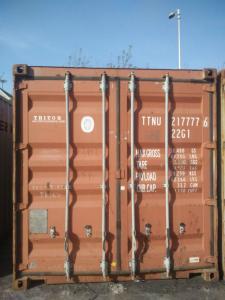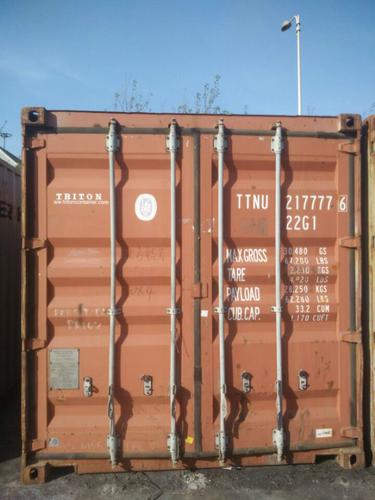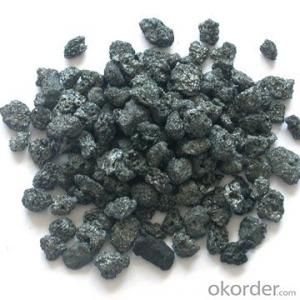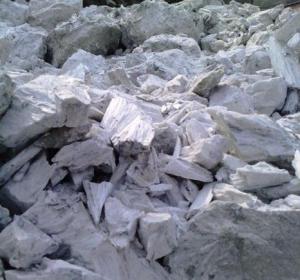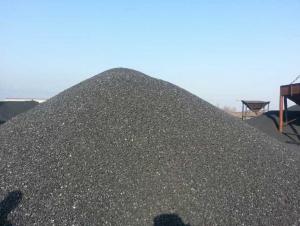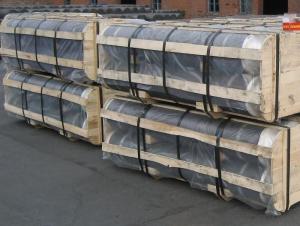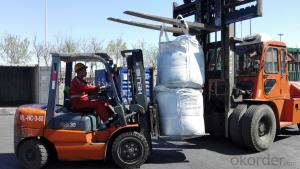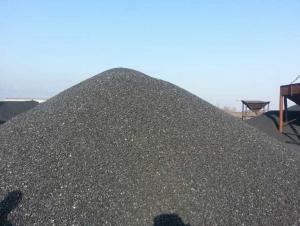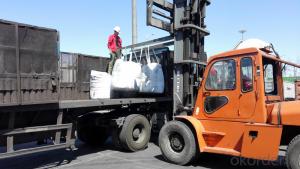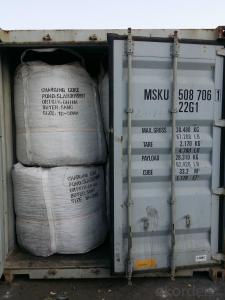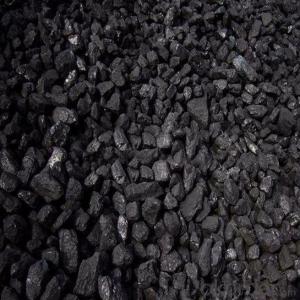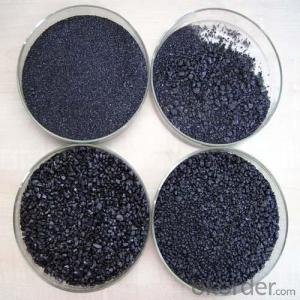S0.5% Recarburizer with fixed caron 95% for steel making
- Loading Port:
- Tianjin
- Payment Terms:
- TT OR LC
- Min Order Qty:
- 20 m.t.
- Supply Capability:
- 1000 m.t./month
OKorder Service Pledge
OKorder Financial Service
You Might Also Like
Specification
Introduction:
Calcined anthracite can be called carbon additive, carbon raiser, recarburizer, injection coke, charging coke, gas calcined anthracite.
Best quality Anthracite as raw materials through high temperature calcined at over 2000℃ by the DC electric calciner with results in eliminating the moisture and volatile matter from Anthracite efficiently, improving the density and the electric conductivity and strengthening the mechanical strength and anti-oxidation. It has good characteristics with low ash, low resistivity, low sulphur, high carbon and high density. It is the best material for high quality carbon products. It is used as carbon additive in steel industry or fuel.
Features:
G-High Calcined Anthracite is produced when Anthracite is calcined under the temperature of 1240°C in vertical shaft furnaces. G-High Calcined Anthracite is mainly used in electric steel ovens, water filtering, rust removal in shipbuilding and production of carbon material.
Specifications:
F.C.% | 95MIN | 94MIN | 93MIN | 92MIN | 90MIN | 85MIN | 84MIN |
ASH % | 4MAX | 5MAX | 6 MAX | 6.5MAX | 8.5MAX | 12MAX | 13MAX |
V.M.% | 1 MAX | 1MAX | 1.0MAX | 1.5MAX | 1.5MAX | 3 MAX | 3 MAX |
SULFUR % | 0.3MAX | 0.3MAX | 0.3MAX | 0.35MAX | 0.35MAX | 0.5MAX | 0.5MAX |
MOISTURE % | 0.5MAX | 0.5MAX | 0.5MAX | 0.5MAX | 0.5MAX | 1MAX | 1MAX |
Pictures
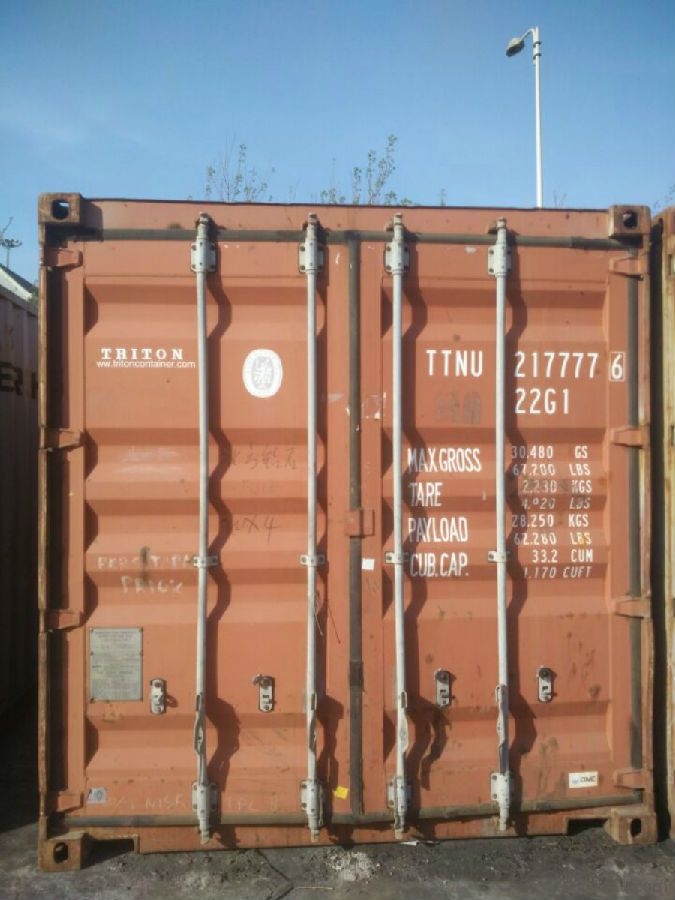
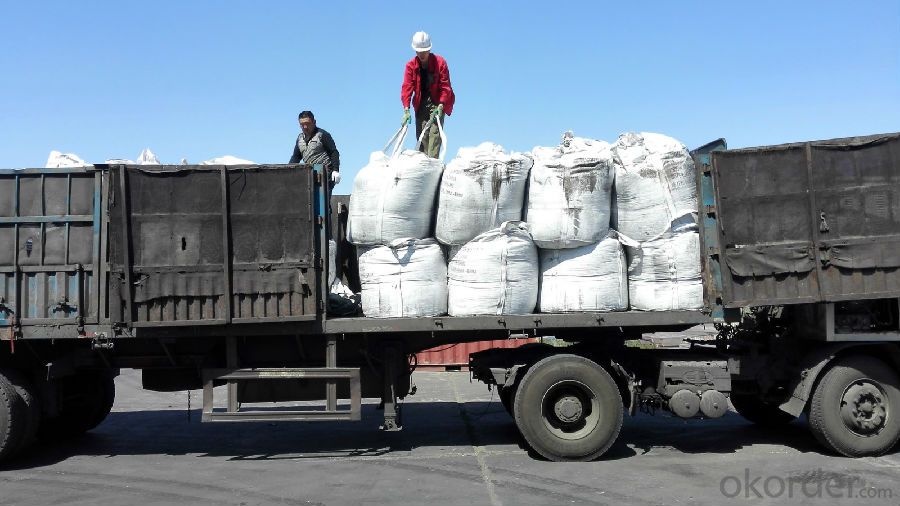
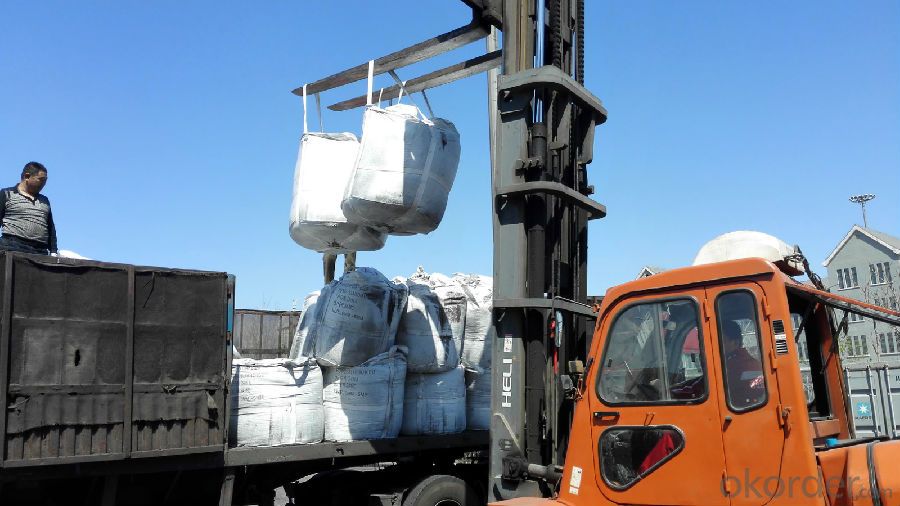
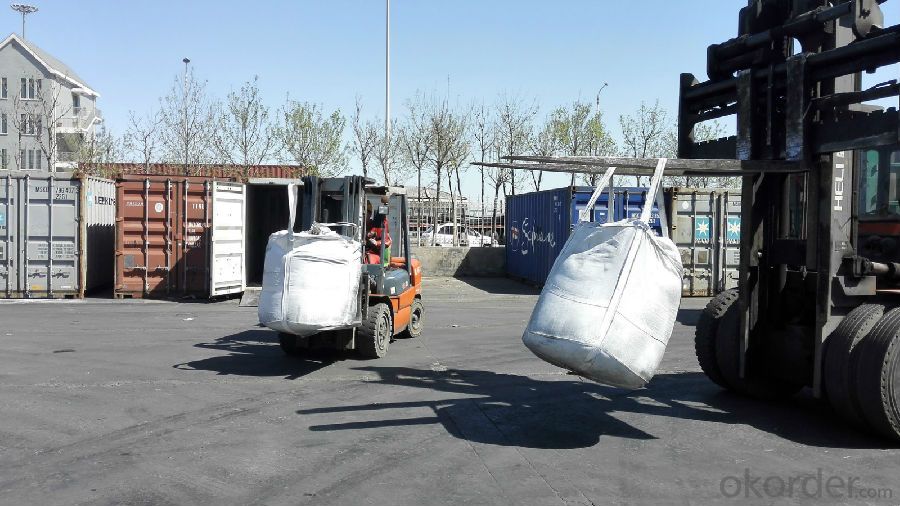
FAQ:
Packing:
(1). Waterproof jumbo bags: 800kgs~1100kgs/ bag according to different grain sizes;
(2). Waterproof PP woven bags / Paper bags: 5kg / 7.5kg / 12.5kg / 20kg / 25kg / 30kg / 50kg small bags;
(3). Small bags into jumbo bags: waterproof PP woven bags / paper bags in 800kg ~1100kg jumbo bags.
Payment terms
20% down payment and 80% against copy of B/L.
Workable LC at sight,
- Q: Is graphite carbon?
- Chemically, it belongs to carbonWhen these carbon atoms connect with each other to form a single substance, they have different ways.
- Q: How does carbon impact soil health?
- The role of carbon in maintaining and improving soil health cannot be overstated. Carbon is a vital component of organic matter, which is crucial for fertile and productive soils. By decomposing plant and animal residues, carbon is introduced into the soil, resulting in better soil structure, increased water holding capacity, and improved nutrient availability. Soil structure is greatly influenced by carbon, as it binds with soil particles to form aggregates. These aggregates create pore spaces within the soil, allowing for improved aeration, water infiltration, and root penetration. The presence of these pore spaces encourages the growth of beneficial soil organisms like earthworms and microorganisms, which further contribute to soil health. In addition to enhancing soil structure, carbon also plays a critical role in improving the water holding capacity of soils. Organic matter, which is rich in carbon, acts like a sponge, holding moisture and preventing water runoff. This is especially important in regions with arid or drought-prone climates, where water scarcity is a concern. Increased water retention not only helps plants withstand dry periods but also reduces erosion and nutrient leaching. Furthermore, carbon is an essential nutrient for soil microbes. Microorganisms, such as bacteria and fungi, break down organic matter and release nutrients that plants require for growth. Carbon-rich soils provide an ideal environment for these microorganisms to thrive, resulting in greater nutrient availability for plants. Additionally, as microorganisms decompose organic matter, they release beneficial substances like enzymes and hormones that support plant growth and overall soil health. To summarize, the impact of carbon on soil health cannot be ignored. It improves soil structure, enhances water holding capacity, and promotes nutrient availability. Therefore, it is crucial to manage and increase carbon content in soils through practices like incorporating organic amendments, implementing cover cropping, and minimizing tillage. These actions can significantly benefit agricultural productivity and sustainability.
- Q: How to identify a laptop shell is carbon fiber
- Carbon fiber, as its name suggests, is made from carbon fiber, so there are several characteristics. First, if it is not colored, you can see the obvious fiber. Second is black carbon color. And it's a lot more than ABS.
- Q: How does carbon affect the formation of avalanches?
- Carbon does not directly affect the formation of avalanches. Avalanche formation primarily depends on factors such as snowpack stability, weather conditions, terrain features, and human activities. Carbon is not a significant factor in these processes.
- Q: How is carbon used in the production of steel?
- The production of steel heavily relies on carbon as it directly impacts the characteristics and properties of the end product. Carbon is primarily used as an alloying element in the steelmaking process, where it is carefully added to modify the composition of the steel. The basic oxygen furnace (BOF) process is one of the most commonly employed methods for steel production. In this process, carbon is introduced to the molten iron to achieve the desired grade of steel. The quantity of carbon added determines the steel's mechanical properties, including hardness and strength. Generally, higher levels of carbon result in a harder and stronger steel. Another steelmaking process, known as the electric arc furnace (EAF) process, also utilizes carbon. In this process, recycled steel scrap is melted down using an electric arc to create new steel. Carbon is added during this stage to adjust the carbon content to meet the requirements of the desired steel grade. Moreover, carbon plays a critical role in the heat treatment of steel. Through techniques like carburizing and quenching, carbon is utilized to enhance the surface hardness and wear resistance of steel components. This is particularly vital in industries such as automotive, aerospace, and construction, where the durability and strength of steel are of utmost importance. To summarize, carbon is indispensable in the production of steel as it directly influences the mechanical properties and overall quality of the final product. From regulating the carbon content to controlling heat treatment processes, carbon serves as an essential component in the steelmaking industry.
- Q: How does carbon impact food production?
- There are several ways in which carbon affects food production. To begin with, carbon dioxide (CO2) is a significant greenhouse gas that plays a role in climate change. The presence of higher levels of CO2 in the atmosphere leads to increased temperatures, changes in rainfall patterns, and more frequent extreme weather events. All of these factors can have a negative impact on crop growth and productivity. For instance, excessive heat can result in lower crop yields and reduced quality, while intense rainfall or droughts can cause flooding or water scarcity, both of which can harm crops and decrease agricultural productivity. Moreover, carbon emissions originating from agricultural practices, such as the utilization of synthetic fertilizers, deforestation for agriculture, and livestock production, contribute to the overall carbon footprint of the food system. These emissions worsen climate change, establishing a vicious cycle in which climate change has an adverse effect on food production, while food production, in turn, contributes to climate change. Furthermore, the production of food is also influenced by carbon emissions from its transportation and processing. The transportation of food over long distances, which often involves the use of fossil fuels, leads to carbon emissions. Similarly, the processing and packaging of food require energy, often derived from fossil fuels, which further adds to carbon emissions. To alleviate the carbon impact on food production, it is necessary to adopt sustainable agricultural practices. This includes techniques like agroforestry, organic farming, and precision agriculture, which can help store carbon in soils, reduce dependency on synthetic fertilizers, and enhance overall soil health. Additionally, reducing food waste and promoting the consumption of local and seasonal food can decrease carbon emissions associated with transportation and processing. In conclusion, carbon affects food production through its contribution to climate change and the resulting extreme weather events, as well as through emissions generated from agricultural practices and food processing. Addressing these impacts is crucial for ensuring food security and sustainability in the face of climate change.
- Q: Last night to go to the supermarket to buy 5 batteries, see Toshiba carbon batteries, I finally bought the super alkaline batteries, alkaline batteries and carbon is the difference in where? What kind of battery is best for digital cameras? Thank you
- Alkaline capacity, not drip waterThe camera needs to be chargedBuy expensive at the supermarket
- Q: What kind of industry does high-performance carbon fiber belong to?
- High performance carbon fiber is used in many industries, such as automobiles, bicycles, and even the aviation industry.. If you look at the industry type, many industries have high-performance carbon fiber figure, if divided by the industry attributes, should belong to the emerging industry, the future potential of the industry
- Q: What are the impacts of carbon emissions on the stability of kelp forests?
- Carbon emissions have significant impacts on the stability of kelp forests. Increased carbon dioxide levels in the atmosphere lead to ocean acidification, which negatively affects the growth and survival of kelp. Acidic conditions hinder the ability of kelp to absorb essential nutrients, weaken their structure, and make them more susceptible to damage from storms and other disturbances. Additionally, rising ocean temperatures associated with carbon emissions can lead to the expansion of harmful algal blooms that compete with kelp for light and nutrients. These combined effects pose a threat to the stability and biodiversity of kelp forests, with potential cascading impacts on the marine ecosystem.
- Q: How is carbon used in the production of paints?
- Paint production utilizes carbon in multiple ways. An important application of carbon in paint production involves its use as a pigment. Carbon black, a type of elemental carbon, is commonly employed as a black pigment in various paint types. It imparts a deep and intense black hue, along with exceptional light absorption characteristics, making it ideal for creating dark tones in paints. Additionally, carbon plays a role in the formulation of specific paint types, such as carbon-based coatings. These coatings find application in scenarios demanding resistance against heat, chemicals, and corrosion. Industries like automotive, aerospace, and marine frequently employ carbon-based coatings, where durability and protection are paramount. These coatings can be applied to diverse surfaces, providing a high level of protection and extending the lifespan of the painted object. Furthermore, carbon serves as a filler material in certain paint varieties. Carbon fillers are added to enhance the mechanical properties of the paint, including strength, hardness, and resistance to wear and tear. They also contribute to the overall performance of the paint, augmenting its durability and longevity. In conclusion, carbon is an indispensable component in paint manufacturing, fulfilling roles as a pigment, a constituent of coatings, and a filler material. Its versatile properties make it a valuable addition to various paint formulations, enhancing the aesthetic appeal, durability, and performance of the final product.
Send your message to us
S0.5% Recarburizer with fixed caron 95% for steel making
- Loading Port:
- Tianjin
- Payment Terms:
- TT OR LC
- Min Order Qty:
- 20 m.t.
- Supply Capability:
- 1000 m.t./month
OKorder Service Pledge
OKorder Financial Service
Similar products
Hot products
Hot Searches
